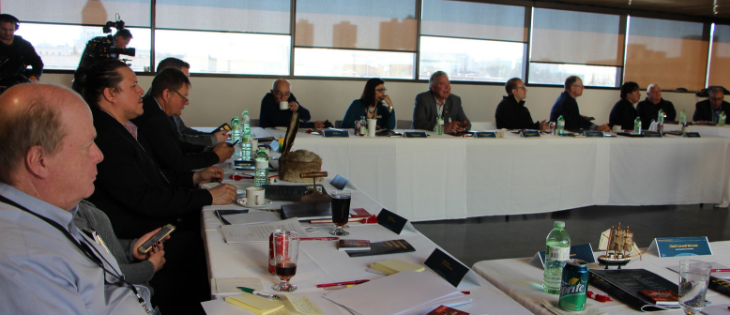This spring, I was privileged to participate in a historic gathering of Indigenous and Municipal leaders. Chiefs, Mayors, and Reeves from southern and central Manitoba met to build new relationships and to begin to resolve issues that have been barriers to collaborative action for over a hundred years. The leaders who took part in this gathering agree that reconciliation can no longer remain just words and best intentions, but must be based on action.
All levels of government, as well as industry, non-profits and residents need to begin the hard work of implementing the broad political and legal commitments of the United Nations Declaration on the Right of Indigenous Peoples and the Truth and Reconciliation Commission’s Calls to Action.
According to Justice Murray Sinclair, “reconciliation is about forging and maintaining respectful relationships. There are no shortcuts.” Indeed, this meeting did not present shortcuts or a clear end goal, but everyone agreed that the time has come for collaborative action and for finding more productive ways of working together.
In Manitoba under the Manitoba Framework Agreement signed in 1997 by the Government of Canada, the Province of Manitoba and the Treaty Land Entitlement Committee 1.4 million acres of land (about 1% of the land mass of Manitoba) is set to be returned to fulfill outstanding treaty obligations that have remained unresolved for more than 150 years.Currently in Manitoba, over 20 years after signing the Framework Agreement we have returned only about 50% of the acres owed and we are currently in negotiations with 21 Indigenous communities.
For many communities this has been a long frustrating process with agreements to settle across all levels of government and with private sector interests on everything from emergency service delivery, to land use planning, to access to resources.
With many Indigenous communities selecting lands across Southern Manitoba, to access larger markets and develop economic drivers, opportunities exist to build new and better relationships. There are many examples across Canada where Indigenous communities and municipalities find mutually beneficial ways forward, so we are not charting new ground there are plenty of examples to follow.
So as the rest of the lands 50% find their way out of the process, we must get better at this. Perhaps the collaborative leadership table can allow us a way forward that meets and exceeds our obligations at the same time as building and enhancing our shared capacity, while also increasing our economic competitiveness, protecting our precious freshwater and natural resources, and improving the quality of life for all of our communities.







0 Comments